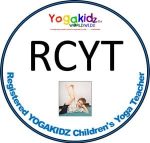Despite the unique characteristics of each special needs child and their condition, there are some shared commonalities in relation to their responses to stress which Yoga can mitigate against, especially as Yoga, is, according to Goldberg [3], a “curriculum for calm.” The major similarities, though each special needs child is individual, are: difficulties with communication including that of emotions, repetitive behaviours, anxiety, depression, self-regulation of emotions, poor sleep, limited body awareness and emotional reactivity [3].
The most significant aspect of Yoga is that it is inclusive and avoids the competitive environment often associated with sports and physical education systems in schools, but because it just does not focus entirely on the physical as in connecting mind, body and breath, it is an excellent choice in terms of holistic health as the word Yoga itself means to unite. In the West, we have a very dualistic approach separating the health of the mind often from the body, yet Yoga’s ultimate goal, according to Patanjali’s Sutras is to quell the fluctuations of the mind, with asana affording the pre-preparation of the body moving towards stillness, leading ultimately to a state of Samadhi which is bringing together the body and senses to rest or homeostasis. Stress causes the most significant aggravation of the sympathetic system (flight, fight or freeze response) which impacts on the function and behaviour of children more with special needs. Yoga places the body more in rest and recovery (parasympathetic system). For example, when a child has ADHD, or hyperactivity disorder, concentration is reduced which can inhibit learning and demonstrate itself in what is considered poor emotional behaviour. However, the use of yogic breathing for example, can help a child with ADHD to work on emotional self-regulation [2]. However, as a caveat to the small examples I offer here from a vast range of needs and benefits, one could not discuss them in such a short blog, because every child has their own unique set of challenges, ergo, the level of support from a Yoga teacher needs to be specialised according to the individual.
According to Goldberg [2], children with Autism and Aspergers are more likely to display issues to do with communication, social skills and awareness, as well as a fixation on objects or adherence to a rigid routine. They can also display repetitive behaviours, with limited emotional self-regulation. Children with attentive deficit disorders (ADHD) are challenged by having limited attention skills and can be impulsive and hyperactive in behaviour. And finally children with Down’s Syndrome may have issues processing language, their sensory, fine and motor skills may be compromised, have short attention spans and display impulsive behaviour. Along with sleep and digestive disturbances, they can also have low muscle tone being hyper-flexible. However, what many children with special needs in the main may suffer from are emotions such as fear, worry, and anxiety. They may have limited emotional self-regulation, hyper-sensitivity, and depression because they are more likely to have over stimulated sympathetic nervous systems. As a result, Yoga to them is of the greatest benefit.
Yoga has already been widely proven in the scientific community to reduce depression and anxiety (as well as insomnia) as it embodies mindful movement and awareness by increasing GABA (gamma-aminobutyric acid), a neuro-transmitter that blocks impulses between nerve cells and the brain. GABA in medical form is used to treat those with ADHD [5]. Furthermore, if increased GABA improves sleep if can be of benefit to children with ASD, ADHD and Down’s children are more likely to have poor sleep patterns. Asana, pranayama and relaxation when combined together from the six limbs of yoga (beyond the Niyamas and Yamas), in not only reducing the stress responses [6], also help digestion which can be of benefit to children with Down’s Syndrome [7]. Due to the impulsivity and poor emotional self-regulation of children with special needs in general, yoga breathing techniques can be of benefit in improving behaviour [6], [7] in particular as they can have a calming effect.
Children with Autism and Aspergers respond well to Yoga because it incorporates movement, sound [4] and repetitive movement, all of which can be very calming to this specific special need if planned well especially for this particular age group where the element of fun and creative play is added to the sessions. Furthermore, because children with ASD can be more physically sensitive in terms of muscular feedback to their brains, they can actually learn yoga much more easily [4]. Moreover, children with ASD, despite having issues to do with social skills and language learning can respond particularly well through modelling gained from the instructor to which the physical nature of Yoga clearly affords [4]. A study done five years ago by Porters found that the regularity of yoga sessions for children particularly with ASD helped them to achieve better communication and socialisation skills and this included better eye-contact. These are all so much part of better learning as well as the development of soft skills for adult life.
The most wonderful aspect of Yoga is that it scaffolds Mindful awareness. This allows children to be more aware of not just their emotions but their thoughts. When this is developed as a skill in children, they can then pick out the negative and ruminative distractions from the positive and be more focused which can enhance learning. When, say for example, a child with Autism catastrophises emotionally, this has been linked, according to research, to poor mental health outcomes [6]. Furthermore, decreasing negative thought patterns will eventually also have a knock on effect on a child’s quality of sleep [6] which is improved. Sleep is vital for children and a reduction in this can have a detrimental affect on mental and physical development. This is particularly more problematic for above six years as the demands of school, social media, and screen-time can lead to sleep disturbances. [9]
Moreover, studies agree that Yoga is of massive benefit to children with ADHD because the mindfulness practices increase focus and slows down impulsivity [9] associated with the condition in particular because the asanas allow children to move. Often within educational settings we expect children with ADHD to remain seated at learning desks and for long periods of time which can be a challenge for children with hyperactive [6]. Movement allows for excess energy to be vented.
The most important aspect of Yoga is its affect on brain neurochemistry in its ability to reduce the stress hormone, cortisol and increase the mood and happiness enhancing neurotransmitter serotonin and dopamine which is involved in the executive brain function of attention, a lack of which is a common symptom of children with ADHD. For the latter it has been found that dopamine dysfunction can explain hyperactivity, Autism and motor deficits children with special needs. When it comes to attention disorders of the brain, the fact that Yoga scaffolds mindfulness and dharana through guided meditation and breathing practice, means it can improve focus important to mastery, and in particular, school learning [6, 8]. Moreover, the tendency for pupils with special needs to experience panic, aggression, self-harm or upset, means that the emotional regulation techniques in Yoga through breathing techniques can help them calm down – such techniques when embedded and taught well can help children with special needs to develop emotional resilience and empathy, and the latter is a great challenge for ASD children.
It has also been found, according to a research report [1] that obesity is more common with special needs children for example, those with Prader-Willi syndrome who tend to feel a compulsive need to eat all the time. Yoga is a fun and more joyful way to introduce a beneficial way of working on the physical health of children with special needs especially when it is done with stories, group work and songs. It is very encouraging to mention that more and more schools are incorporating Yoga within their physical education curriculum, and my own school where I work is a case in point. But also Yoga is an excellent method to develop fine motor and gross skills. This can be done, for example, through balance poses, and adopting movements like some of the animals from which the poses take their names. Furthermore, as unlike much of the programmes on the physical education curriculum in schools, because it is non-competitive, children with special needs who feel already disadvantaged by some comparison to their peers, it helps to build their confidence. This is particularly important as we modify poses less and less and with time allow the children to move on to more complicated asanas to master. This allows the special child to have a sense of achievement and this can improve self-esteem, so important to learning and mental well-being. I particularly like how Yoga affords the ability to incorporate social skills through group work and partner poses, but also literacy skills through story telling, and imagination especially if children are allowed to have a degree of creativity in the sessions. As an ex-English teacher I am very encouraged by this knowledge which I use to promote the benefits of Yoga to schools. When providing themes to the classes such as courage, friendship, and gratitude around which the sessions are based, we are also helping the special develop interpersonally, intellectually and to become emotionally resilient. The trouble with PSHE (Personal, Social, Health and Economic lessons) curriculums in schools is that they can be a discrete and tick box add-on to the school lessons often delivered in dry tutorial sessions and assembly rather than a fun way of exploring complex issues. Though PSHE are seen as vital to giving pupils skills to prepare children for their adult life it is not compulsory and most schools will say they are inadequately equipped, resourced or informed on how to do this properly [10]. The issue of mental well-being, a growing concern for our children, has in part been embraced by PSHE programmes; however, Yoga tackles such an issue in a very practical way. We need Yoga as a preventative strategy alongside other methods of support in schools for whole child health.
[1] Diament, M. (2007) Obesity is More Common Among Kids With Special Needs. Available at(online):https://www.disabilityscoop.com/2011/12/07/obesity-special-needs/14599/ Accessed, 31st, August, 2018.
[2] Goldberg, L (2013) Yoga Therapy for Children with Autism and Special Needs. Norton.
[3] Hardy, S. H. (2014) Asanas for Autism and Special Needs. Jessica Kingsley Publishers.
[4] Porter, J., (2012). Yoga as an Effective Behavioural Intervention for Children Diagnosed with an Autism Spectrum Disorder. Graduate Annual.
[5] Satheeshkumar, K. & Rajaguru, S., (2016). Impact of Yogic Practice on Adjustment Behaviour of School Children. International Education and Research Journal.
[6] Harssar, J., (2017). How Teachers are Using Mindfulness as Responsive Pedagogy for Students with ADHD. Thesis Dissertation, Ontario Institute for Studies in Education, University of Toronto, Toronto, Ontario.
[7] Butterfield, N., et al. (2017). Yoga and mindfulness for anxiety and depression and the role of mental health professionals: a literature review. The Journal of Mental Health Training, Education and Practice.
[8] Chou, C. C., & Huang, C. J., (2017). Effects of an 8-week yoga program on sustained attention and discrimination function in children with ADHD. Peer Journal.
[9} Children and Sleep (ND). Available at (online) https://sleepfoundation.org/sleep-topics/children-and-sleep Accessed, 5th, September, 2018
[10] Why Mental Health Education needs to be Compulsory in UK Schools – our Reply to the Government (ND). Available at (online) https://shawmindfoundation.org/why-mental-health-education-needs-to-be-compulsory-in-UK-schools–our-reply-to-the-governmentAccessed, 5th, September, 2018




